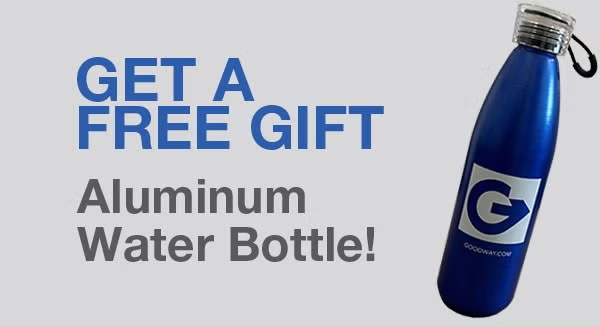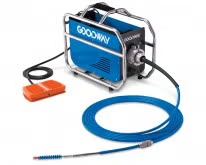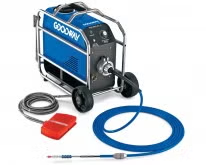Cost-Effective Chiller Tube Cleaning

A good cleaning maintenance program for air conditioning or production-based chillers will increase operating efficiency, reduce energy costs, reduce downtime and provide more reliable performance of the chiller system. The comfort of building occupants is very important to facilities, managers, and maintenance executives alike, and maintaining a clean chiller system will certainly provide for greater occupant comfort during the warm weather months.
For commercial air conditioning chillers, there are essentially two types of water cooling systems: the "open-loop" and the "closed-loop". An open-loop system brings in water from an external source (such as a river or even the ocean), uses it to cool the refrigerant in the chiller, and then discharges that water back to its source. A closed-loop system continuously recycles the same water from, for instance, a cooling tower.
In the open-loop system, the source of contaminants that obstruct the chiller system is the water source itself. These contaminants could range from minerals and salt to sludge and actual marine growth.
In the closed-loop system, one of the major sources of contaminants is the cooling tower. Here, the water is atmospherically cooled and is subjected to airborne contamination, such as dust, dirt particles, pollen, and mold spores.
Whether open or closed loop, a dirty chiller will adversely affect operations and require more power (increasing energy costs) to get the same cooling output as a clean chiller. A dirty chiller system also has to work harder, which puts excessive strain on the motors and the integral mechanical systems, which include pumps and bearings. The end result, obviously, is a shorter operating life of the system.
Cleaning Methods
Ideally, a facility's scheduled maintenance program would include chiller cleaning. Early spring, or possibly winter months when chillers are not in use, would be the best times to schedule cleaning operations.
The established method of determining the efficiency of the chiller is to monitor the operating pressures of the system. When pressures begin to increase, particularly head pressure, it's an indication that chiller cleaning is necessary.
There are several chiller tube cleaning methods. One method is chemical tube cleaning, where a chemical solution (an acid, in some cases), is circulated through the chiller to clean the tubes.
An alternative method is a mechanical tube cleaning approach. Some manual chiller tube cleaning methods involve pushing a brush through each tube, then flushing afterward. However, the residue left after the brush is pushed through may dry on the surface before flushing and the subsequent water flush will not remove it.
Another mechanical cleaning system rotates a cleaning brush, or buffing tool, attached to a motorized flexible shaft through the chiller tube, while water-flushing the tube at the same time. The advantages of this system are that the tubes are given a thorough scouring and the simultaneous water flush allows the tubes to be completely cleaned, before they dry.
Proper Torque
A brushing/flushing system must produce a torque output, which is compatible with the limitations of the flexible shaft used. For example, research has shown that 1/2 HP at 862.5 RPM produces an output torque that is suitable for the motorized cleaning shafts used to clean tubes of up to 1" interior diameter and 1 HP is suitable for tubes larger than 1".
Still, a third mechanical cleaning approach incorporates the shooting of a scrubber device through the chiller tube, using a blast of air and water. The chief advantage of a system of this type is speed. It provides very rapid tube cleaning with satisfactory results, where scouring is not needed.
A scheduled chiller tube cleaner maintenance program will lower operating costs, extend equipment life and provide maximum occupant comfort. Matching your cleaning method to your chiller tube cleaning requirements will provide you with the highest levels of operating efficiency and cost-effectiveness.
Reprinted for Goodway Technologies Corporation with the permission of Cleaning & Maintenance Management Magazine.








